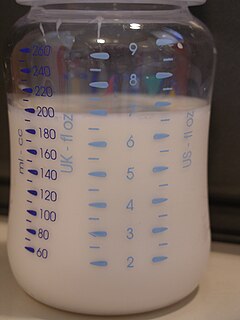Related Research Articles
The ton is a unit of measure. It has a long history and has acquired a number of meanings and uses over the years. It is used principally as a unit of mass. Its original use as a measurement of volume has continued in the capacity of cargo ships and in terms such as the freight ton. Recent specialised uses include the ton as a measure of energy and for truck classification. It is also a colloquial term.

The tonne, is a non-SI unit of mass equal to 1,000 kilograms. It is commonly referred to as a metric ton in the United States. It is equivalent to approximately 2,204.6 pounds, 1.102 short tons (US) or approximately 0.984 long tons (UK). Although not part of the SI, the tonne is officially accepted for use with SI units and prefixes by the International Committee for Weights and Measures. One tonne is also equal to one megagram (Mg), a less common way to express the same mass.
United States customary units are a system of measurements commonly used in the United States. The United States customary system developed from English units which were in use in the British Empire before the U.S. became an independent country. However, the United Kingdom's system of measures was overhauled in 1824 to create the imperial system, changing the definitions of some units. Therefore, while many U.S. units are essentially similar to their Imperial counterparts, there are significant differences between the systems.
The quintal or centner is a historical unit of mass in many countries which is usually defined as 100 base units of either pounds or kilograms. It is commonly used for grain prices in wholesale markets in India, where 1 quintal = 100 kg.
Long ton, also known as the imperial ton or displacement ton, is the name for the unit called the "ton" in the avoirdupois system of weights or Imperial system of measurements. It was standardised in the thirteenth century and is used in the United Kingdom and several other British Commonwealth of Nations countries alongside the mass-based metric tonne defined in 1799.

The hundredweight, formerly also known as the centum weight or quintal, is an English, imperial, and American unit of weight or mass of various values. Its value differs between the American and imperial systems. The two values are distinguished in American English as the "short" and "long" hundredweight and in British English as the "cental" and the "imperial hundredweight".
The short ton is a mass measurement unit equal to 2,000 pounds-mass. Its usage is confined to the United States and known as simply a common ton.
The tun is an English unit of liquid volume, used for measuring wine, oil or honey. Typically a large vat or vessel, most often holding 252 wine gallons, but occasionally other sizes were also used.
English units are the units of measurement that were used in England up to 1826, which evolved as a combination of the Anglo-Saxon and Roman systems of units. Various standards have applied to English units at different times, in different places, and for different applications.

Both the imperial and United States customary systems of measurement derive from earlier English systems used in the Middle Ages, that were the result of a combination of the local Anglo-Saxon units inherited from German tribes and Roman units brought by William the Conqueror after the Norman Conquest of England in 1066.
The wey or weight was an English unit of weight and dry volume by at least 900 AD, when it begins to be mentioned in surviving legal codes.
The last was a large English unit of weight, mass, volume, and number. It referred to standardized amounts of ships' lading and varied by commodity and over time.
The quarter is used as the name of several distinct English units based on ¼ sizes of some base unit.

Bags have been used as standard measures for a variety of commodities which were actually supplied in bags or sacks. These include:
The sack was an English unit of weight or mass used for coal and wool. It has also been used for other commodities by weight, commodities by volume, and for both weight and volume in the United States.
The load, also known as a fodder, fother, and charrus, was an English unit of weight or mass of various amounts, depending on the era and the substance being measured.
A number of different units of measurement were used in Argentina as its national system was derived from Spanish Castillian. The metric system was legally optional since 1863 and has been compulsory since 1887.
A number different units of measurement were used in Brazil to measure quantities including length, mass, area, and capacity, as those units were derived from Portugal and had significant local variances.
A number of different units of measurement were used in Cyprus to measure quantities like length, mass, area and capacity. Before the Metric system, the British system was used. In between 1972-1974, metric system was adopted in Cyprus.
A number of units of measurement were used in Mexico to measure length, mass, area, capacity, etc. The Metric system was optional from 1857, and has been compulsory since 1896.
References
- ↑ "Seam, n.2 (1b and 2)". Oxford English Dictionary . Retrieved 26 February 2015.
- ↑ Cardarelli, François (2003). Encyclopaedia of Scientific Units, Weights and Measures . London: Springer. pp. 34. ISBN 978-1-4471-1122-1.